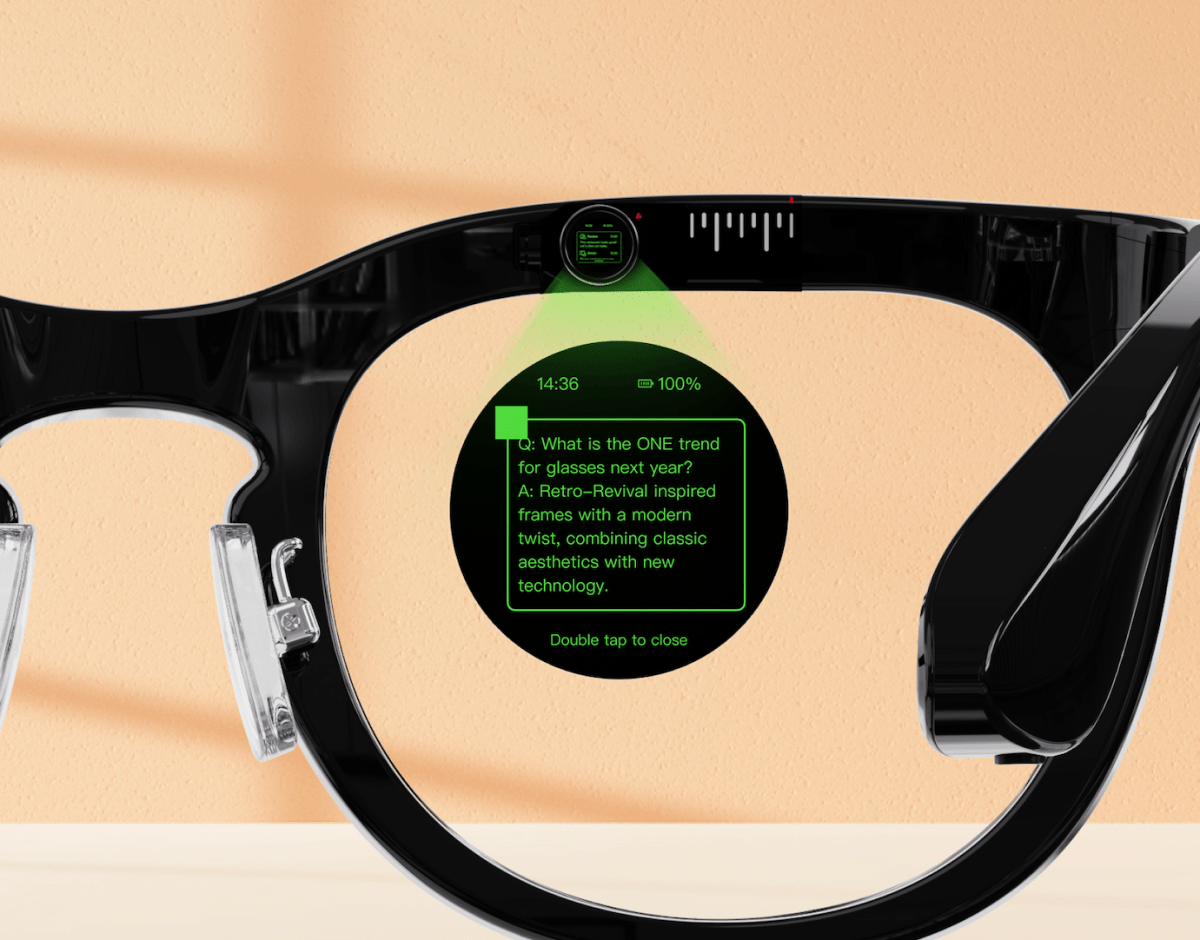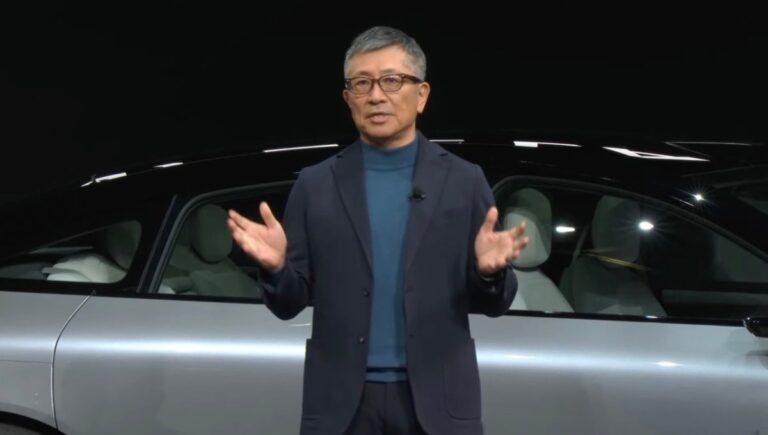Halliday’s $489 smart glasses beam a tiny screen to your eye
Walk up to someone wearing a pair of Halliday’s smart glasses, and you might not notice they’re looking at smartphone notifications, live language translations, or advice from an AI assistant.
The only giveaway is the tiny green dot of light on their eyeball.
Wearables startup Halliday launched a pair of smart glasses at CES 2025 that projects a 3.5-inch round display into your line of sight. The device creating the display is called the DigiWindow, and it’s a tiny round module — smaller than your pinky nail — that sits on the inside of the Halliday’s frames just above your right eye.

While most augmented reality glasses — at least, the ones you see demoes of — project text and images onto the lenses of your glasses, Halliday’s approach is a little more direct. By pointing the DigiWindow straight at your eye, Halliday avoids the need for those pricey AR lenses, which makes these smart glasses less expensive than other AR prototypes,(but definitely not cheap) and also better looking. You can also use prescription lenses in these glasses without an issue.
Halliday is planning to ship pairs of these glasses starting in March 2025. The full price is $489, but you can preorder a pair of Halliday’s glasses this week for $369, as long as you pledge $9.90 to their Kickstarter on Wednesday. At the preorder price, Halliday’s smart glasses are just a tad more expensive than a pair of Ray Ban Metas.

I tried on a pair of Halliday smart glasses in a quiet corner of the Ceaser’s Palace Casino in Las Vegas, while the company’s founder, Carter Hou, spoke to me in Chinese.
As Hou spoke, English subtitles appeared over his right shoulder with only a second of delay. We went back and forth for a few minutes, him speaking in Chinese and me speaking in English, as the smart glasses facilitated our bilingual conversation.
Halliday’s glasses offer real-time language translation for 40 languages. Beyond that, the glasses will display phone notifications, a cheat sheet with notes (which could come in handy for a big meeting or interview — or final exam …), and navigation directions. The glasses’ arms have speakers that can play music or read messages, but the display is the main selling point.
The company also says there’s a “proactive AI assistant” that can offer helpful information about conversations you’re having in real time. However, Hou told me the AI feature was not ready for testing yet when I tried it out.
Smart glasses are quickly becoming the buzziest form factor to use AI. You can certainly see how the DigiWindow would be a helpful display to access a text-based LLM, like ChatGPT or Gemini, throughout your day.

Halliday hasn’t yet figured out how to position its DigiWindow, which has to sit perfectly above your eye in order to display properly. The module can slide back and forth a few centimeters and tilt up and down a few degrees. However, for my high nose bridge, I couldn’t get the DigiWindow to fall perfectly in my line of sight, so I had to wear the glasses sitting about halfway down my nose.
When I asked whether it’s safe to point Halliday’s green lights in your eyes, Hou told me the glasses are perfectly safe, and my eyes did feel fine for the 10 minutes I was wearing the glasses. That said, I’d understand if people felt a little uneasy about pointing lights in their eyes from such close range.
The company also promotes a control ring that you can wear on your index finger. You slide your thumb up or down to navigate through different features of the glasses. I wasn’t able to try that out.
Halliday’s smart glasses are slimmer and lighter than a pair of Ray Ban Metas, and they also don’t have cameras on the front. The benefit here is that they look pretty good, not much different than normal glasses, sporting a classic design.

Smart glasses with cameras can occasionally raise the eyebrows, with strangers wondering, “Who’s this creep recording me?” However, to others (including this reporter), the cameras on smart glasses are a feature, not a bug, that let you take photos and videos without taking out your phone and ruining the moment.
Halliday’s smart glasses offers a compelling version of smart glasses with a display that you can preorder now, as opposed to prototypes from big tech companies with no commercial launch date in sight.
Check out more CES 2025 coverage, including…




![Pixar’s Upcoming Disney+ Show Win or Lose Removed a Transgender Storyline [UPDATED]](http://socialtechguide.com/wp-content/uploads/2024/12/Win-or-Lose-Pixar-768x512.jpg)


